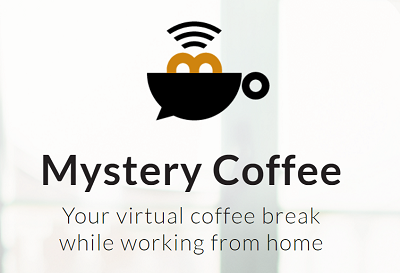Become a #virtualspacehero 🚀
Key takeaways from a #virtualspacehero LinkedIn LIVE
18.09.2020 | 14:00 CET
How to break down the barriers in your (partially) virtual teams?
With Christoph Drebes (Founder & Director Mystery Minds)and Barbara Covarrubias Venegas (#virtualspacehero)
Why is Silo Thinking a problem?
Silo thinking curbs evolution. A silo mentality is a reluctance to share information with employees of different divisions in the same company. Personal interaction that spans departments and hierarchies – that’s how organisations create trust and break down barriers. In doing so, they lay the foundation for their future viability in a modern working world.
In this blog, we will answer the following questions:
👉 Silo mentality: how to overcome it and become a better team? Why do we even create silos or how are they created? Why do we need to talk now about silos?
👉 What kind of silos can exist? How can we identify silos in our organisations?
👉 When we start to tackle our organisational silos, what do we need to take into considerations? What are important steps?
👉 What is a MysteryCoffee and why can it help?
🎥 If you want to watch the LinkedIn live recording, here it is 👇
What is a silo and what does it have to do with our organisations?
Silos are used in agriculture to store grain or fermented feed known as silage. Silos are commonly used for bulk storage of grain, coal, cement, carbon black, woodchips, food products.
„Usually silos do not have doors, windows or any other entrance point except for the top. The general principle is: one silo = one grain, no mix-ups! This is why in the business world, we use the metaphor “silo-thinking” to describe when there is no or not enough flow of information, collaboration or connection between different departments of a company.“ (Barbara Covarrubias Venegas)
Mysteryminds is an organisation that provides tools, such as Mystery coffee, mystery lunch or mystery brainstorming, developed in order to tackle this problem. An organisation that implements one of these tools, follows the main idea to connect random employees from different departments – for a coffee break, for a lunch together or for a brainstorming activity. Depending on the goals of the company, you can program the algorithm that connects people from different departments, different gender, different age groups, or even people who are new to the company and people who have been working for a long time for your organisation and so on.
„Another challenge with silos is also the limited diversity. When you work in one department of a company for many years, you spend your days always with the same people, working with the same models, approaches and ideas. Eventually, you only have people that think the same way, which is not the best for innovation.“ (Christoph Drebes)

What to consider?
If the company is globally distributed you need to take language and time zones into account. Moreover, coffee culture varies depending on the country. For instance, in Spain drinking coffee together is pretty important and employees take their coffee or lunch break even for two hours, while in the UK employees prefer shorter breaks.
How to Use Mystery Minds tools? A company can sign up their employees for mystery coffees or lunches. Employees get a form to fill with different variables (language, location, department, interests, place in the hierarchy, etc.). After filling in the form, they receive email invitations with their coffee/lunch matches. As many businesses switched from office work to virtual work, the interaction between employees also changed. Thus, if a company works virtually, it is also a great idea to implement virtual coffees with other employees from different departments.
Beyond Mystery Minds: how to overcome Silos and become a better team?
Silo thinking can happen because of different reasons. An example can be the merger of two companies where sometimes the „us“ versus „them“ is difficult to get rid of. However, there are various aspects to consider in order to create the atmosphere of belonging for everyone.
💡 Mix the teams. One of the best ways to connect the teams is to bring them together and mix them up. In this way, they will have to collaborate with each other and develop personal connections.
💡 Use ’WE’ in conversations. If you want to create the bond and connection between the employees in a company, address the whole team as ’we’ – language is powerful and even though this seems a very small piece of the puzzle – it can have a tremendous impact.
💡 Have mixed meetings. Have short mixed meetings with your team and members from different departments of your organisation, where you discuss ideas or simply use the time to chat and give this space to create connections.
💡 Use different work exchange programs. For instance, Columbus360 offers inspirational expeditions to new countries & cultures from 1 to 6 months for employees of corporates and organizations. Columbus360 takes care of planning, logistics and paperwork. They provide accomodations and a professional working infrastructure respecting state-of-the art IT security standards.
If you want to try Mystery Coffee and connect with people from across the globe, you can do that for free here!
💡 Resources 💡
Barbara Covarrubias Venegas: Lost in Connection or not? Trust and belonging in a virtual team
Barbara Covarrubias Venegas: Listen to improve your virtual session: Improv techniques to build trust
Harvard Business Review: Hacking the Silos: Eliminating Information Barriers Between Public Health and Law Enforcement
Forbes: The Silo Mentality: How To Break Down The Barriers

Christoph Drebes
Christoph is the founder & director of Mystery Minds, an organisations which builds match making solutions for face-to-face communication. Mystery Minds offers innovative matching tools for personal exchange in the digital world.







